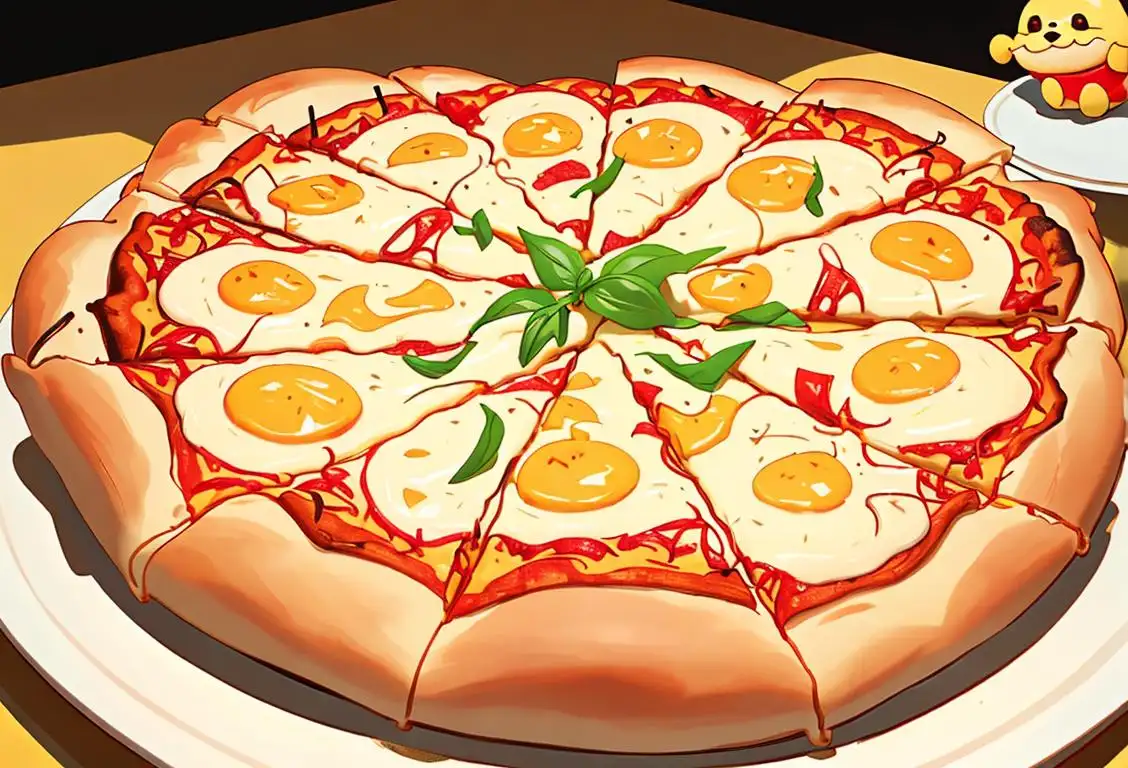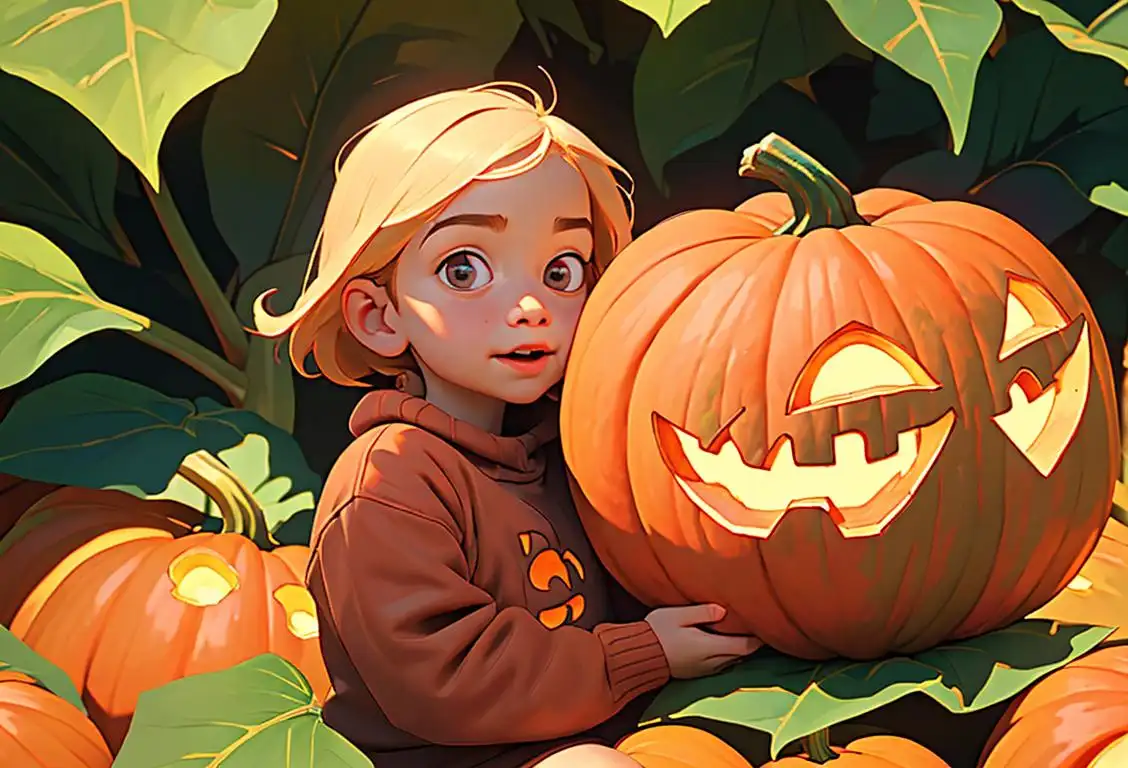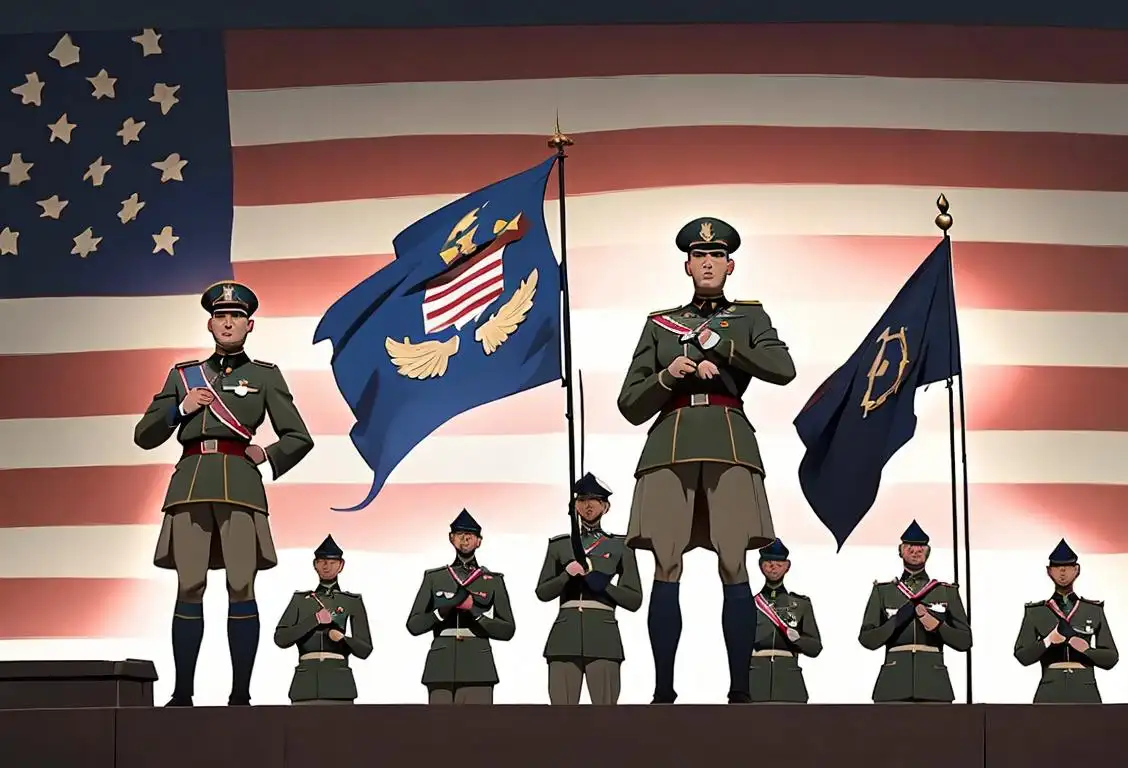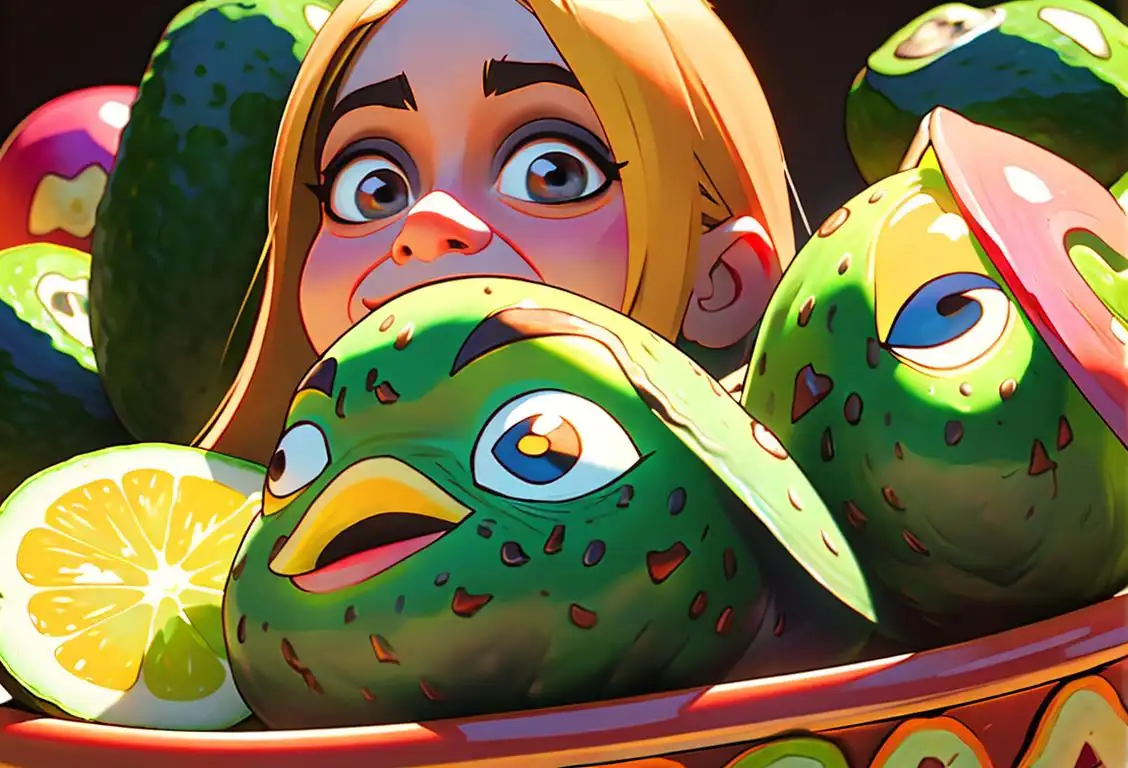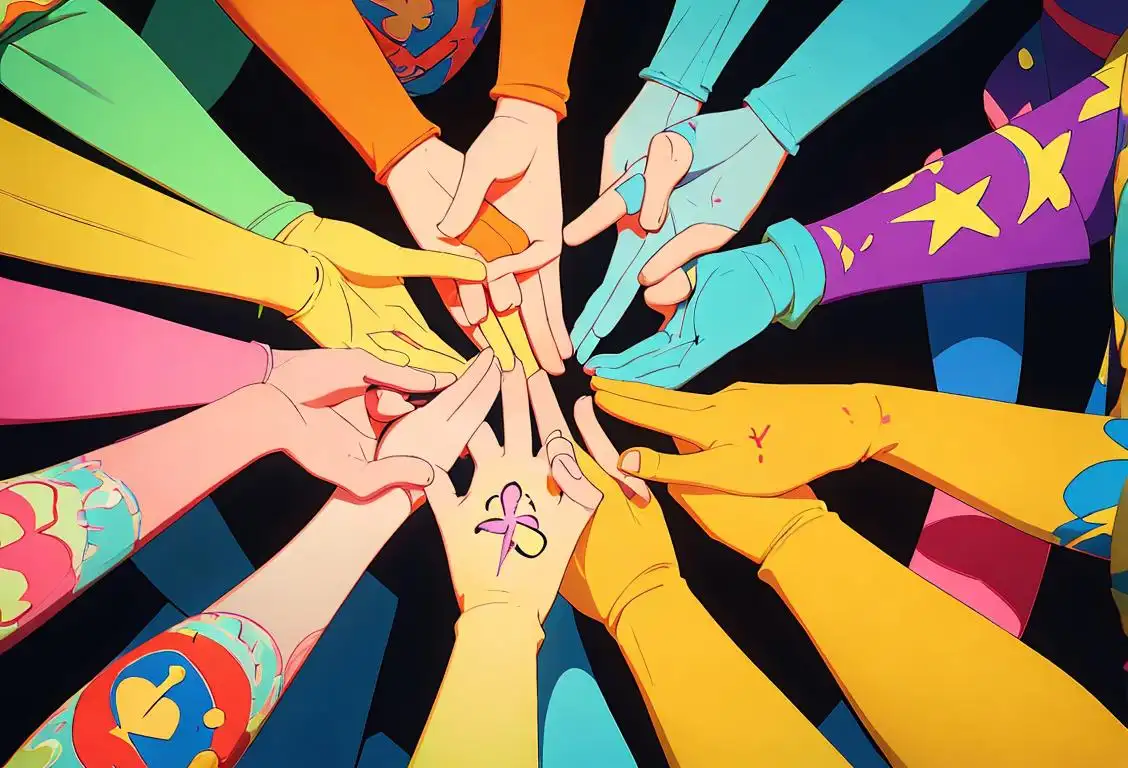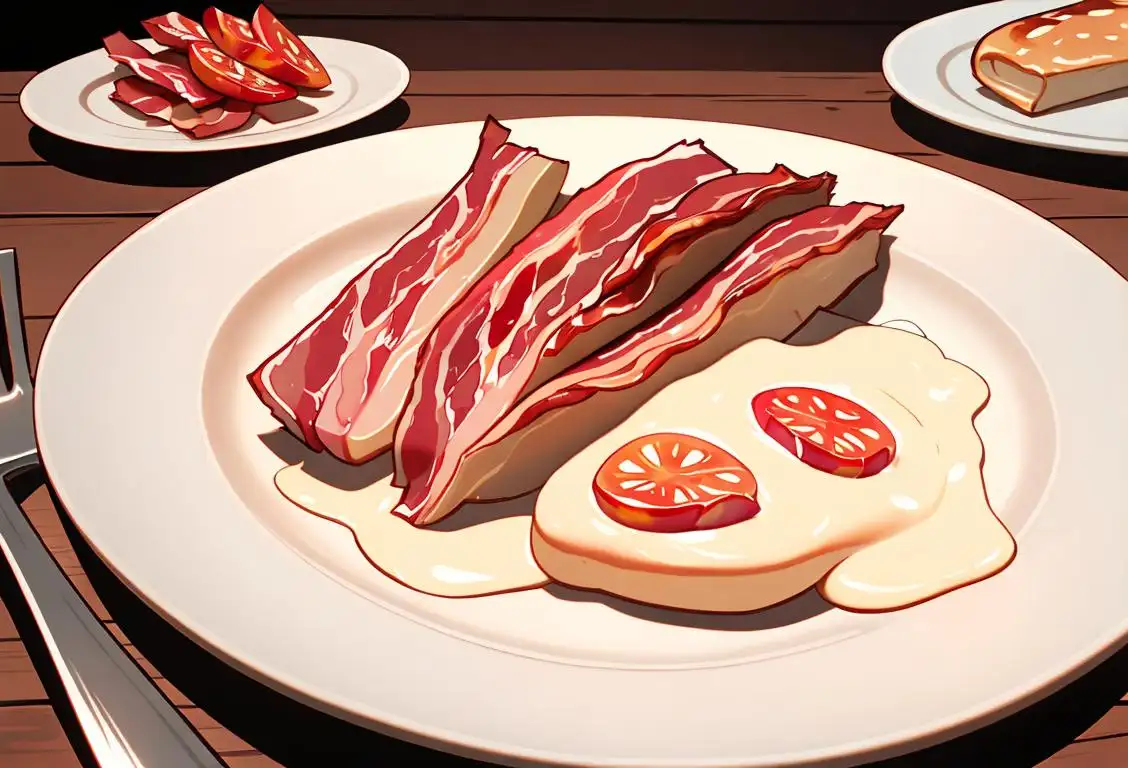National Knock Knock Jokes Day

Knock, knock! Who's there? It's National Knock Knock Jokes Day, a hilarious celebration that brings smiles and laughter to people of all ages. So get ready to flex those funny bones and indulge in some playful wordplay!
When is Knock Knock Jokes Day?
It's national knock knock jokes day on the 31st October.
The History of National Knock Knock Jokes Day
Every year on October 31st, we celebrate National Knock Knock Jokes Day, a lighthearted observance dedicated to the art of the knock knock joke. The origins of this humorous holiday can be traced back to the early days of the internet when jokes and memes spread like wildfire.
The first recorded mention of National Knock Knock Jokes Day dates back to 2008 when internet users started sharing their favorite knock knock jokes on social media platforms. As the popularity of these quirky jokes grew, so did the celebration of this special day. People began creating funny memes, videos, and even organizing knock knock joke contests to showcase their comedic talents.
Today, National Knock Knock Jokes Day is a much-anticipated event that brings people together to share laughter and joy. It's the perfect opportunity to brighten someone's day with a lighthearted joke or engage in friendly banter with friends and loved ones.
How to Celebrate National Knock Knock Jokes Day
Celebrating National Knock Knock Jokes Day is as easy as one, two, knock! Here are a few fun ideas to make the most of this laughter-filled occasion:
- Gather your favorite knock knock jokes and share them with friends, family, and coworkers. Laughter is contagious, so spread the joy!
- Create your own knock knock jokes and unleash your inner comedian. Don't be afraid to get silly and let your imagination run wild.
- Organize a virtual knock knock joke contest and invite your friends to participate. Get ready for some friendly competition and lots of laughter!
- Explore the internet for funny knock knock memes and videos. There's a vast collection of hilarious content out there just waiting to make you chuckle.
- Spread the laughter on social media by using the hashtag #NationalKnockKnockJokesDay. Share your favorite jokes and funny moments to brighten up someone's feed.
Did You Know?
Did you know that knock knock jokes have been around for centuries? The earliest examples of knock knock jokes can be found in Shakespeare's plays. Yes, even the great Bard himself indulged in a bit of playful wordplay!
History behind the term 'Knock Knock Jokes'
1929
Introducing the First Knock Knock Joke
The term 'knock knock jokes' originated in 1929 with the introduction of the first recorded knock knock joke. This genre of jokes relies on a simple and repetitive format, where the joke-teller engages in a dialogue by initiating with 'knock knock,' to which the recipient responds with 'who's there?' The joke-teller then completes the joke with a humorous punchline, typically utilizing wordplay or puns.
1929
Origins of the Knock Knock Joke
Knock knock jokes trace their origins back to 1929 when they first appeared in a newspaper humor column called 'Fun-O-Grams' by humorist and radio personality Samuel T. West. The jokes quickly gained popularity due to their simple and interactive nature.
1929
First Recorded Knock Knock Joke
The first recorded use of a knock knock joke was in 1929 in a newspaper column written by Earl Wilson. He shared a simple exchange that went as follows: Person 1: "Knock knock" Person 2: "Who's there?" Person 1: "Boo" Person 2: "Boo who?" Person 1: "Don't cry, it's just a joke!" This simple joke format quickly gained popularity and became the foundation for future knock knock jokes.
1929
Introduction of vaudeville sketch
The term 'knock knock jokes' originated in 1929 with the introduction of a vaudeville sketch called 'Knock Knock'. This sketch was performed on the radio show 'The Witching Hour' and featured puns and wordplay in a humorous dialogue format.
1929
The Birth of 'Knock Knock'
In 1929, a song titled 'Knock, Knock, Who's There?' by the influential American songwriter Shelton Brooks was released. This song is believed to be one of the earliest recorded mentions of the phrase 'knock knock'. It popularized the rhythmic repetition of 'knock knock' as a form of verbal playfulness.
1929
Introduction of the 'knock-knock' phrase
The phrase 'knock-knock' first appeared in the 1929 song 'Buck Privates' by American jazz musician and songwriter Vincent Youmans. It was used in the lyrics as a form of playful interaction between two characters.
1929
Introduction of the 'knock knock' phrase
The phrase 'knock knock' was first popularized in the late 1920s, particularly in the United States. It entered the mainstream culture as a playful way to interact and engage in conversation. The exact origin of the phrase is uncertain, but it quickly gained recognition as a simple and amusing opening to a joke.
1929
Early Origins
Knock knock jokes trace their origins back to 1929 when they first appeared in a humor column of a Pennsylvania newspaper called "The Philadelphia Public Ledger." These early 'knock knock' jokes were structured as a simple dialogue between two people, with the first person uttering 'Knock, knock!' and the second person responding, 'Who's there?'
1929
The Birth of Knock Knock Jokes
The term 'knock knock jokes' originated in the year 1929. These jokes are a form of wordplay known for their simple and repetitive structure. Comedy writers and entertainers began experimenting with this format, which quickly gained popularity among children and adults alike due to their playful nature.
1929
The Early Days
The term 'knock knock joke' originated in 1929 when a humor columnist named Bob Adams first introduced them in his book 'The Flopsy, Mopsy and Cottontail Book'. These early knock knock jokes set the foundation for the popular format we know today.
1936
Variety Show Appearances
In the year 1936, knock knock jokes made their way onto the stages of popular variety shows. Comedians such as Fred Allen and Jack Benny incorporated these silly, yet engaging, jokes into their acts, bringing the term 'knock knock jokes' into the public eye and further solidifying their place in comedy culture.
1936
Knock Knock Jokes in Vaudeville
Knock knock jokes made their way to the stage in the 1930s during the Vaudeville era. Comedians began incorporating these jokes into their acts, using the interactive and repetitive nature of the joke to engage with the audience. The format proved to be a hit, further establishing the knock knock joke as a favorite among comedy performers and audiences alike.
1936
Publication of 'Knock-knock: Fun with Names'
In 1936, a book titled 'Knock-knock: Fun with Names' was published by Robert L. Ripley, the creator of Ripley's Believe It or Not! The book contained a collection of knock knock jokes involving wordplay on names and became popular, introducing the term to a wider audience.
1936
Introduction in Children's Literature
In 1936, the 'Knock, Knock: My First Book of Knock-Knock Jokes' by Ruth Plumly Thompson was published. This was one of the earliest books dedicated solely to knock knock jokes, specifically targeting children. The book helped cement the popularity of knock knock jokes among young readers.
1930s
Popularity and Spread through Radio
During the 1930s, knock knock jokes gained immense popularity and began to spread through the medium of radio. Various radio shows and comedians leveraged the interactive nature of these jokes, allowing listeners to engage and participate in the humorous exchanges. This exposure on radio programs helped to solidify knock knock jokes as a cultural trend and contributed to their widespread recognition.
1930s
Burgeoning Popularity
During the 1930s, 'knock knock' jokes gained popularity among radio hosts and comedians. They became a staple of vaudeville acts and radio programs, allowing performers to engage the audience with this interactive form of humor. As their popularity grew, 'knock knock' jokes spread to other forms of media, such as books and magazines.
1936
Comedy Catches On
In 1936, a Vaudeville comedian named James Lewis performed a routine that heavily relied on knock knock jokes. His act, which incorporated quick back-and-forth exchanges with an offstage voice, became an instant hit and brought the knock knock joke into the mainstream comedy scene.
1936
First Appearance in Print
The term 'knock knock' made its way into print in 1936 when a humorous book titled 'The Jovial Joker' by S. Walter Ross was published. This collection of jokes featured the earliest documented example of a 'knock knock' joke: 'Knock knock.' 'Who's there?' 'Rufus.' 'Rufus who?' 'Rufus the most important part of your house!' This marked the first time the classic structure of a 'knock knock' joke was recorded.
1936
First recorded 'knock knock' joke
The first recorded instance of a 'knock knock' joke was published in a book called 'The Little Giant Book of Jokes' in 1936. The joke went as follows: 'Knock knock. Who's there? Rufus. Rufus who? Rufus the most important part of your house!'. This marked the beginning of a new genre of jokes that would become increasingly popular in the years to come.
1936
Use in films
The 'knock-knock' phrase gained popularity in the 1930s through its inclusion in several Hollywood films. In the movie 'Make Way for Tomorrow' released in 1937, the 'knock-knock' gag was used for comedic effect, introducing it to a wider audience.
1940s
Rise in Popularity
During the 1940s, 'knock knock' jokes gained significant popularity, appearing in various children's books and joke collections. This simple yet playful format became a staple in family-friendly humor, creating a sense of anticipation and engagement as the jokes unfolded.
1950s
Influence of Knock Knock Jokes on Children's Humor
By the 1950s, knock knock jokes had become particularly popular among children. These jokes became a significant part of their playful interactions, fostering creativity and wordplay at an early age. The simple structure and repetition of knock knock jokes made them easily understandable and memorable for children, contributing to their enduring appeal.
1940s
Development of knock knock jokes
During the 1940s, the 'knock-knock' phrase evolved into a structured joke format known as knock knock jokes. Comedians and entertainers started creating playful and repetitive dialogues using the phrase, with a pun or wordplay as the punchline. These jokes became immensely popular and were soon enjoyed by people of all ages.
1940s
Integration into popular culture
During the 1940s, 'knock knock' jokes gained significant traction and became a staple of comedy and entertainment. They were often included in radio shows, comedy sketches, and even movies. The simplicity and repetitive structure of these jokes made them easily memorable, leading to their widespread popularity among people of all ages.
1960s
Rise in popularity through children's entertainment
During the 1960s, knock knock jokes gained significant popularity as they became a staple in children's entertainment. They appeared in joke books, magazines, and were often shared among friends and family, delighting children with their simple and repetitive structure.
1960s
Popularity in Children's Culture
During the 1960s, knock knock jokes gained great popularity as a form of entertainment for children. They appeared in joke books, comics, and even on television shows like 'The Ed Sullivan Show' and 'The Smothers Brothers Comedy Hour'. These jokes became a staple of playground humor and helped shape the comedic sensibilities of a generation.
1950s
Knock Knock Jokes Become Mainstream
During the 1950s, knock knock jokes entered the mainstream culture and gained widespread popularity. They became a staple in comedy routines, radio shows, and even television programs. The simple and repetitive format of knock knock jokes made them accessible and appealing to a wide audience.
1940
Mainstream Popularity
By the year 1940, knock knock jokes had reached mainstream popularity. They became a beloved form of humor for people of all ages, appearing in newspapers, books, and radio shows. This widespread exposure helped solidify the term 'knock knock jokes' as a recognizable phrase associated with this specific type of humor.
1960s
Mainstream Popularity
In the 1960s, knock knock jokes reached their peak of mainstream popularity. They became a staple of children's humor and were featured in various joke books, magazines, and even television shows. The simplicity and whimsical nature of knock knock jokes made them easily understandable and relatable, appealing to people of all ages.
1960s
Family Entertainment
In the 1960s, 'knock knock' jokes became immensely popular as family-friendly jokes. They were often included in children's joke books and were a common form of entertainment during family gatherings or road trips. The lighthearted and interactive nature of these jokes made them universally appealing and enjoyable for all ages.
1960s
Integration in Popular Culture
Knock knock jokes became integrated into popular culture during the 1960s, appearing in various forms of media such as movies, television shows, and books. They were often used as comedic devices to elicit laughter and engage the audience. The light-hearted and universally relatable nature of knock knock jokes made them suitable for all age groups, increasing their widespread recognition and continuing their cultural impact.
Late 20th Century
Variations and Adaptations
As knock knock jokes continued to grow in popularity, various variations and adaptations emerged. People started incorporating puns, wordplay, and clever twists into the traditional knock knock format, adding depth and creativity to these humorous exchanges. This creative evolution allowed knock knock jokes to remain fresh and entertaining, ensuring their longevity in popular culture.
1970s
Variations and Wordplay
In the 1970s, knock knock jokes saw a surge in variations and wordplay. Comedians and joke writers began experimenting with puns, wordplay, and absurd punchlines within the traditional knock knock format. This innovation further solidified the knock knock joke as a versatile and enduring form of humor.
1960s
Affirmation through recording artists
In the 1960s, several recording artists, such as Louis Armstrong and The Supremes, released songs featuring 'knock knock' jokes. These songs further solidified the cultural recognition of 'knock knock' as a comedic format. With these artists' influence, 'knock knock' jokes became interwoven into popular music and continued to entertain audiences around the world.
1970s
Cultural Phenomenon
During the 1970s, knock knock jokes reached their peak as a cultural phenomenon. They became a staple of children's entertainment and were commonly shared among friends and family. Knock knock joke books became best-sellers, and kids would eagerly share them at school or during social gatherings, cementing their place in pop culture.
1950s
Television and Films Embrace 'Knock Knock'
The 1950s witnessed an explosion of 'knock knock' jokes in popular media. Television shows such as 'The Howdy Doody Show' and 'The Jack Benny Program' incorporated these jokes into their comedic sketches, further cementing their presence in American culture. Additionally, comedy films like 'Knock on Wood' (1954) starring Danny Kaye showcased the widespread appeal of 'knock knock' humor.
1970s
Knock Knock Joke Fever
The 1970s witnessed a boom in the popularity of 'knock knock' jokes. They became a cultural phenomenon, appearing in television shows, movies, and even on merchandise. 'Knock knock' jokes were no longer confined to print media but were now incorporated into mainstream entertainment, further solidifying their place in popular culture.
1952
Knock knock jokes in popular culture
In 1952, the 'knock knock' joke format gained significant recognition with their appearance in the popular children's book 'The Official Knock Knock Joke Book' by William Cane. This humorous compilation contributed to the widespread adoption of knock knock jokes as a popular form of entertainment among children and adults alike.
1960s
Knock Knock Jokes in Pop Music
In the 1960s, knock knock jokes found their way into popular music. Famous musicians like Louis Armstrong and Doris Day incorporated knock knock jokes into their songs, making them even more widely known. This further contributed to the cultural impact and popularity of knock knock jokes.
1970s
Mainstream cultural phenomenon
In the 1970s, knock knock jokes became a mainstream cultural phenomenon. They were featured in popular TV shows, such as 'The Flip Wilson Show', and gained widespread recognition as a form of light-hearted humor. The simplicity and accessibility of knock knock jokes contributed to their widespread appeal.
Present
Internet Age and Memes
In the present day, knock knock jokes have withstood the test of time and remain a beloved form of humor. With the rise of the internet and social media, knock knock jokes have found new life as memes and shareable content. They continue to be enjoyed by people worldwide, proving that this light-hearted and pun-filled term has become an enduring part of comedy history.
2007
World record for the longest knock knock joke
In 2007, the Guinness World Record for the longest knock knock joke was set. Comedian and writer David Farnell crafted a knock knock joke with a staggering 1,217 lines. This event highlighted the enduring popularity and creativity associated with knock knock jokes.
1960s
Knock knock jokes on television
During the 1960s, knock knock jokes made their way onto television shows, further increasing their popularity. These short, light-hearted jokes became a favorite segment in comedy variety shows, showcasing the wit and playful banter of both professional comedians and regular individuals.
Present
Continued popularity and evolution
To this day, 'knock knock' jokes remain popular forms of humor. They have evolved over time, with variations and creative twists added to the traditional structure. 'Knock knock' jokes continue to bring laughter and amusement to people of all ages, whether shared in person, through social media, or as part of a stand-up comedy routine. Their enduring popularity demonstrates the timeless appeal of this simple and playful form of comedy.
2000s
Digital Age and Internet Memes
With the rise of the internet and social media in the 2000s, knock knock jokes found a new home in the digital realm. Memes featuring knock knock jokes spread rapidly across platforms like Reddit and Twitter, often accompanied by clever GIFs or images. The internet's impact helped revitalize the popularity and reach of knock knock jokes among younger generations.
1970s
Knock Knock Jokes Extend to Television
Throughout the 1970s, knock knock jokes were prevalent on television shows, particularly in comedy skits and variety programs. The interactive and light-hearted nature of knock knock jokes made them perfect for entertaining audiences and bringing laughter to television screens.
Present Day
Continued Popularity and Online Culture
Knock knock jokes continue to thrive in the present day, remaining a beloved form of light-hearted humor. They have found a new home on the internet, with countless knock knock joke compilations scattered across social media platforms and joke websites. In the age of memes and viral content, knock knock jokes have adapted to fit the online culture, contributing to their enduring presence in everyday conversations and entertainment.
Present
Enduring Appeal
'Knock knock' jokes have managed to maintain their popularity and enduring appeal to this day. They have become a timeless form of humor, often delighting people at parties, social gatherings, or even in everyday conversations. The simplicity and predictability of the joke structure, along with the element of surprise in the punchline, contribute to their continued enjoyment by people of all ages.
1960s
Crossing Generations
By the 1960s, 'knock knock' jokes had become a cultural phenomenon that transcended age groups. They were shared and enjoyed by both children and adults, creating a sense of shared amusement and bonding across generations.
Present
Continued Modern Relevance and Evolution
In the present day, knock knock jokes continue to be a prominent form of humor. They have evolved alongside changes in language and society, adapting to incorporate references to pop culture, technology, and contemporary themes. Memes, social media, and online platforms have provided new avenues for the dissemination of knock knock jokes, ensuring their enduring popularity and cultural relevance in the digital age.
1970s
Public Recognition
The 1970s brought significant public recognition to 'knock knock' jokes. Stand-up comedians like Milton Berle and joke-telling acts on popular variety shows helped to keep the popularity of 'knock knock' jokes alive. This increased exposure contributed to their enduring place in the comedic landscape.
Modern Times
Internet Popularity and Evolution
Knock knock jokes have come a long way since their humble beginnings. With the advent of the internet, knock knock jokes have found a new platform for their widespread sharing and enjoyment. Online communities, social media, and joke websites have increased the accessibility and reach of knock knock jokes, allowing them to constantly evolve and adapt to modern humor trends.
Present
Continued popularity and evolution
Knock knock jokes have continued to be a beloved form of humor in popular culture. They are often exchanged among friends, shared on social media platforms, and even used in advertisements and marketing campaigns. Over time, knock knock jokes have undergone various adaptations, incorporating elements of current events and pop culture references, ensuring their relevance and entertaining generations to come.
Present
Continued presence in popular culture
Today, knock knock jokes continue to be a beloved form of humor, especially among children. They are often shared on social media platforms, incorporated into comedy routines, and featured in children's books. Despite their simplicity, knock knock jokes continue to bring smiles and laughter to people of all ages.
Present
Ubiquitous in Humor
Today, 'knock knock' jokes continue to be a widely recognized and enjoyed form of humor. They have become synonymous with light-hearted playfulness and remain an integral part of children's jokes, comedy routines, and even advertising campaigns. This enduring cultural impact ensures that 'knock knock' jokes will continue to bring smiles to people's faces for years to come.
Did you know?
Did you know that knock knock jokes have been around for centuries? The earliest examples of knock knock jokes can be found in Shakespeare's plays. Yes, even the great Bard himself indulged in a bit of playful wordplay!Tagged
awareness fun loved onesFirst identified
31st October 2016Most mentioned on
31st October 2017Total mentions
18Other days
Compliment Day
Cheese Pizza Day
Pumpkin Day
Medal Of Honor Day
Guac Day
Foundation Day
Suicide Prevention Day
Memorial Day
Cancer Survivors Day
Bacon Day

